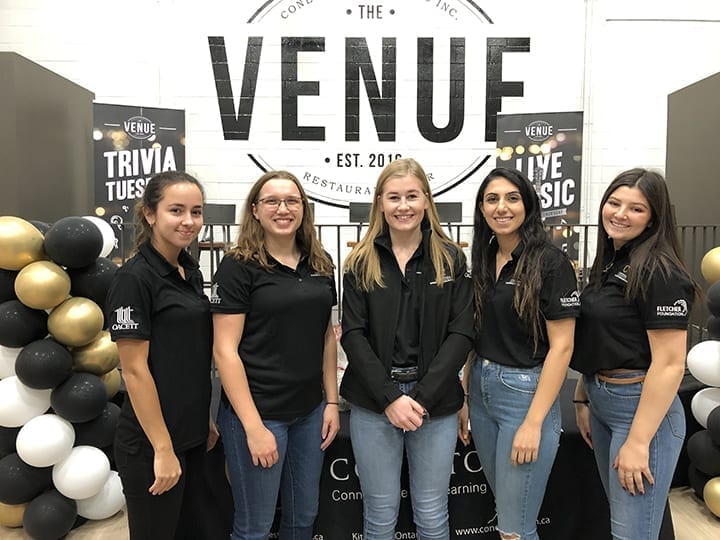Breaking Barriers: Inspiring Women in Engineering Jobs
Engineering empowers society in so many unprecedented ways, and with innovation at its core, the profession recognizes reaching its full potential requires the inclusivity of all segments of society. Two years ago, the Ontario Association of Certified Engineering Technicians and Technologists (OACETT), in collaboration with other engineering organizations, sounded the alarm over the engineering profession’s asymmetrical gender landscape. A phenomenon where women’s underrepresentation in science, technology, engineering, and mathematics (STEM) careers starves innovation and discourages or prevents women from achieving economic prosperity on the same footing as men.
Concerned about this gender gap, its lackluster growth of female members, and the biases women face in the workplace, OACETT, the independent certifying body for engineering and applied science technicians and technologists that confers the designations C.Tech. (Certified Technician) and C.E.T. (Certified Engineering Technologist), with more than 25,000 members, took action. In December 2018, OACETT and the Ontario Society of Professional Engineers (OSPE) signed (Figure 1) the “Leadership Accord on Gender Diversity,” publicly committing to promoting the values of diversity, equality, and inclusion of women in the Canadian workplace.

Launched by Electricity Human Resources Canada (EHRC), the Leadership Accord on Gender Diversity entrusts signatories (employers, educational institutions, and unions) to improve opportunities for women in the Canadian workforce through recruitment, retention, career progression, and training/development. More than 40 organizations have confirmed actions to build a truly representative workforce of Canadians; ensuring women are informed of opportunities within their occupation, provided equal opportunities to grow, and supported to achieve their full potential.
OACETT President Kim Pickett, C.E.T., LET said, “Signing the Accord, OACETT has fastened its commitment to support, create, and inspire equal opportunities for women, which is critical to the success of the engineering technology community, Ontario’s economy, and society as a whole.”
Over the past few decades, men’s constant imagery in STEM careers has created a perception that engineering jobs are male-dominated. This mindset has led to glaring gender bias and exposed the need for female tech talent in various industries. For example, carmakers used to design crash test dummies based on the average man, putting 47% of female drivers at risk of serious injury in a car crash. Even though male and female bodies act differently in crashes, the crash test dummy design was based on the fiftieth percentile male. This failure to create crash test dummies without including alternative perspectives showed female ingenuity could make a difference. With more female engineering professionals in the design thinking process and pressure from regulators, the first female crash test dummies became legally required in safety testing in 2011.
“When you remove barriers, innovation is unleashed,” explained Pickett. “You see, inclusivity invites a diverse group of professionals with different ideas and perspectives into the mix, and this single action ignites innovation, which in turn, triggers the development of imaginative and enduring solutions to global problems.”
For this reason and others, OACETT is advancing its existing policies and governance practices in a manner that promotes inclusivity and real opportunities for women. This commitment is being achieved through a range of initiatives outlined in the Accord, including:
■ Striving to ensure women represent between 10% and 30% of the board of directors and senior management positions.
■ Committing to the ongoing improvement of workplace policies, practices, and operating procedures so that women are sufficiently represented in the workplace.
■ Promoting occupations and career opportunities where women are underrepresented in a way that attracts more women.
■ Developing processes or special programs that help advance women within the workplace and support their development.
Since the signing of the Accord, OACETT has strived to increase the number of women in the association’s governance and leadership, and has promoted the business case that diverse leadership teams make good business sense. OACETT’s values embody equity, diversity, and inclusion. In fact, OACETT reached a celebrated milestone in 2020 with all three of its leadership positions—CEO, president, and the president-elect—held by women. Fletcher Foundation, a subsidiary of OACETT, has awarded several scholarships to exceptional female students over the past year (Figure 2). OACETT’s 2019 Provincial Awards and Honours awarded Denise van Osch, C.E.T. with the distinguished service award and Mary-Anne Church received the outstanding educator award for their exceptional contributions in fostering opportunities for women in technology.

Each year, OACETT participates in National Engineering Month (NEM) to promote engineering technology and applied science fields. Through professional networking, panel discussions, and design challenges, young people—especially girls and young women—are inspired to consider a STEM career path. Last year, OACETT student member Brendan Woo organized workshops for middle-school girls to promote awareness and interest in engineering careers, earning his team the top prize in OACETT’s NEM Ontario College Challenge.
In 2021, OACETT plans to form a Women in Technology Taskforce to investigate ways to further engage female members, and grow participation in chapters and the association overall. The results of the Taskforce’s study will be presented in a report to OACETT’s board of directors. This initiative and the other efforts OACETT has undertaken to support women’s advancement in the profession are encouraging for the engineering technology industry and those invested in ensuring a brighter future for women. ■
—Michelle Malcolm-Francis is editor of publications and senior marketing communications specialist with OACETT.